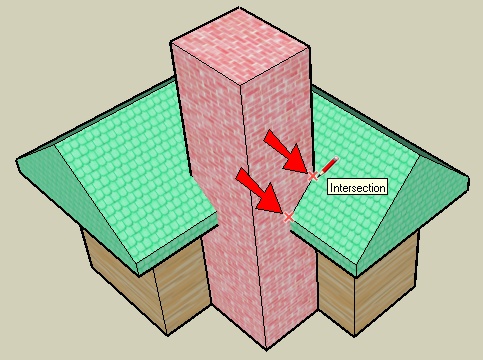Chapter 3. Intersection Edges: Cutting and Trimming
When you want to use objects to trim or cut other objects, you use the Intersect tool. This tool calculates where two or more objects intersect or overlap one another, and draws edges along these intersections. These intersection edges define the area or volume to cut.
Along with the Follow Me tool, the Intersect tool was introduced back in version 5 to much fanfare. Prior to Intersect, users had to manually trace intersection edges. For example, if you needed to cut a roof to accommodate a chimney, you would use the Line tool to trace edges between intersection points (Figure 3-1).

The problem with manual tracing is that, as in the preceding example, you sometimes have to orbit all the way around to find all the edges to draw. Missing or forgetting edges, such as the ones along the bottom of the roof, is easy too. Not to mention, for complex models, manual tracing can be quite tedious, particularly when you use round objects: “round” objects in SketchUp are actually composed of short linear segments, so you have to draw intersection edges along each small segment.
When you use Intersect, you can quickly get an entire set of accurate intersection edges, without changing your view or using your mouse to create dozens of edges.
Note
New to version 7 is the Break Edges function, which automatically breaks edges where ...
Get Google SketchUp Cookbook now with the O’Reilly learning platform.
O’Reilly members experience books, live events, courses curated by job role, and more from O’Reilly and nearly 200 top publishers.

